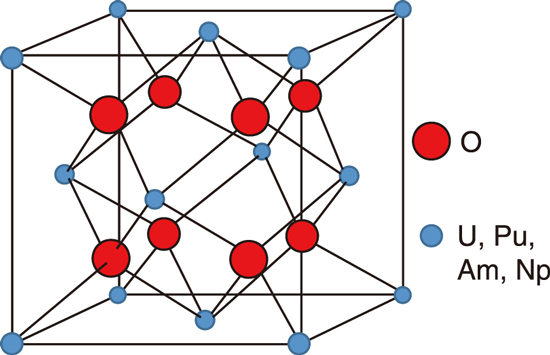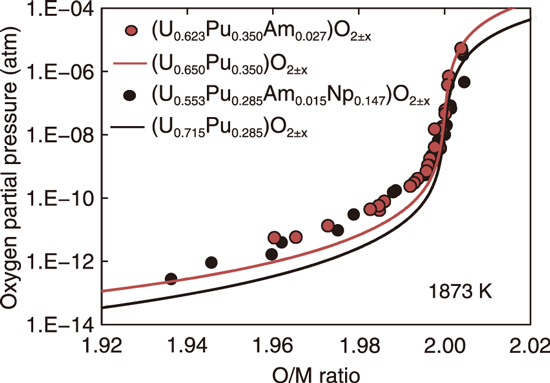
Fig.7-16 Schematic diagram of the crystal structure of MOX

Fig.7-17 Relation between O/M ratio in MOX and the surrounding O2 partial pressure (1873 K)
Spent fuels contain minor actinide (MA) elements such as americium (Am) and neptunium (Np) with long half-lives and strong radioactivity. Because these elements can be transmuted to other elements with shorter half-lives and weaker radioactivity by fast reactors, MOX fuels containing MA have been developed for these reactors. MOX fuels have the unique property that the ratio of the number of oxygen atoms (O) to that of metal atoms (U, Pu, Am and Np), called the O/M ratio, can vary continuously. Fig.7-16 shows a schematic diagram of the crystal structure of MOX fuels. The O/M ratio in the crystal continuously varies with exhaustion (reduction) or trapping (oxidation) of O in the crystal depending on the oxygen partial pressure of the atmosphere and atmospheric temperature. It is known that the MOX properties related to fuel design, such as thermal conductivity, are very sensitive to even slight variations in the O/M ratio. Hence, the accurate estimation of the O/M ratio is important.
Our research group used an oxygen sensor and a thermogravimeter to measure slight variations in the mass in Am-bearing MOX and Am/Np-bearing MOX during reduction or oxidation accompanied by changes in temperature or oxygen partial pressure. Then, the data were converted to the O/M ratio equilibrated to the temperature and oxygen partial pressure.
Fig.7-17 shows the relation between the O/M ratio on the horizontal axis and the oxygen partial pressure on the vertical axis. Under a given condition of temperature and oxygen partial pressure, the O/M ratio was lower in MA-bearing MOX than in MA-free MOX. This result can possibly be attributed to the easy reduction of Am oxide.
Although studies were conducted on the O/M ratio in MOX fuels, limited data on MA-bearing MOX are available. The data obtained in this work were compared with those in the available literature and a relation for evaluating the O/M ratio from Am and Np contents, temperature, and oxygen partial pressure was modeled; to the best of our knowledge, this is first time that such a quantitative analysis has been conducted.
Hereafter, we will study the properties of MOX fuels and simulate their behaviors during irradiation in a reactor by considering the O/M ratio calculated by the model.
(Shun Hirooka)
<Previous: 7-6 | Next: 8 Research and Development on Fuel Reprocessing, Decommissioning, and Radioactive Waste Management>